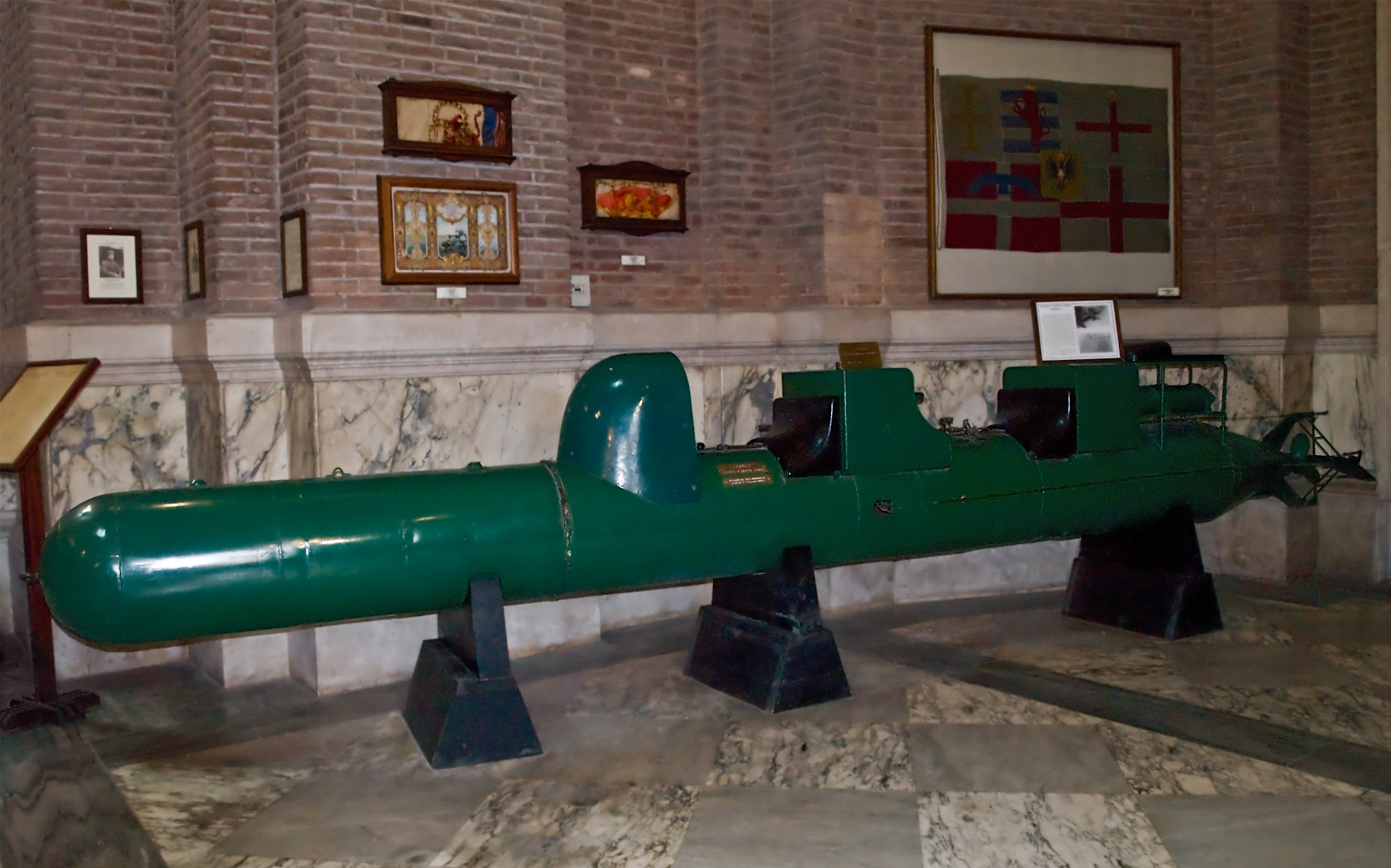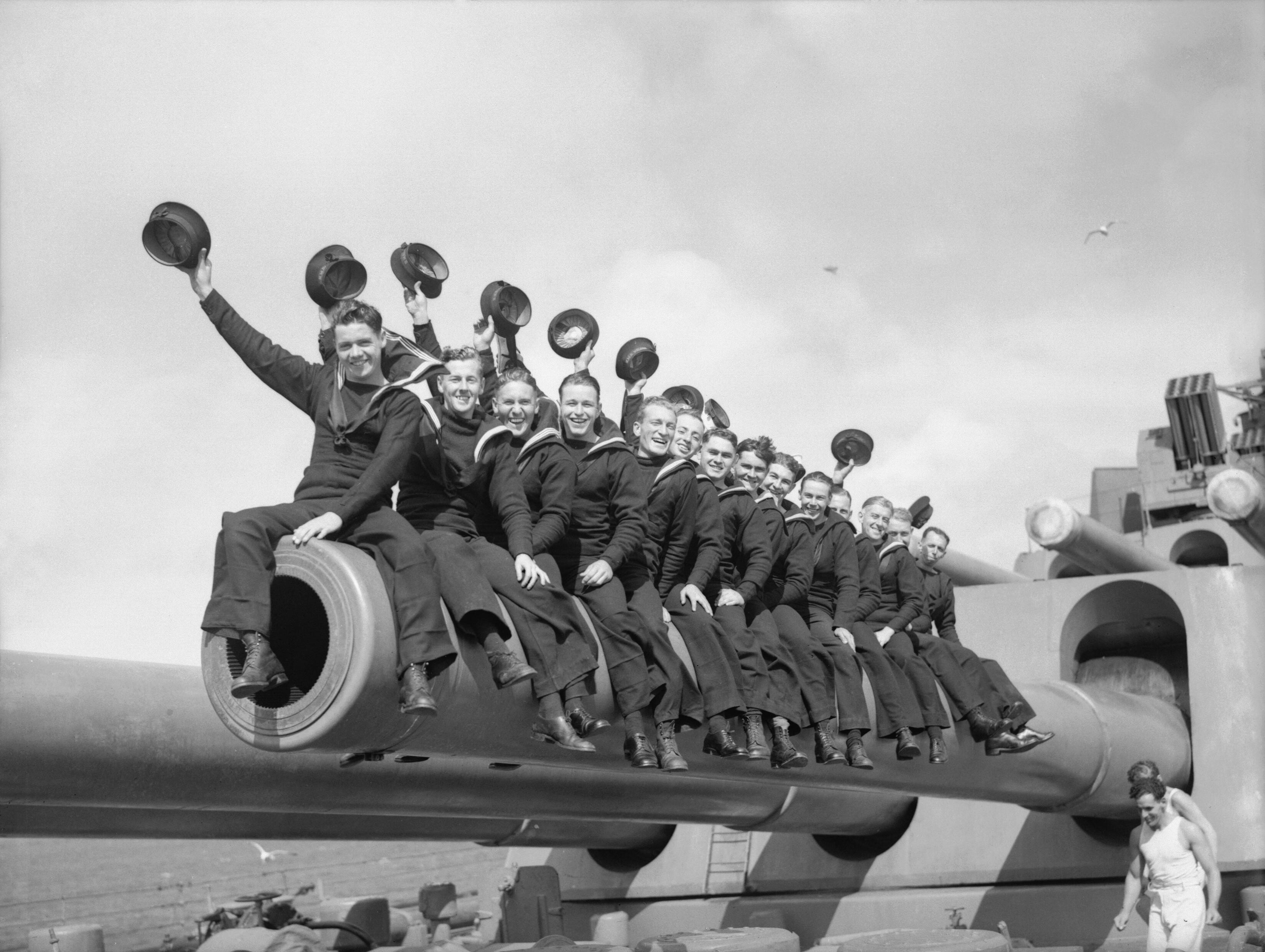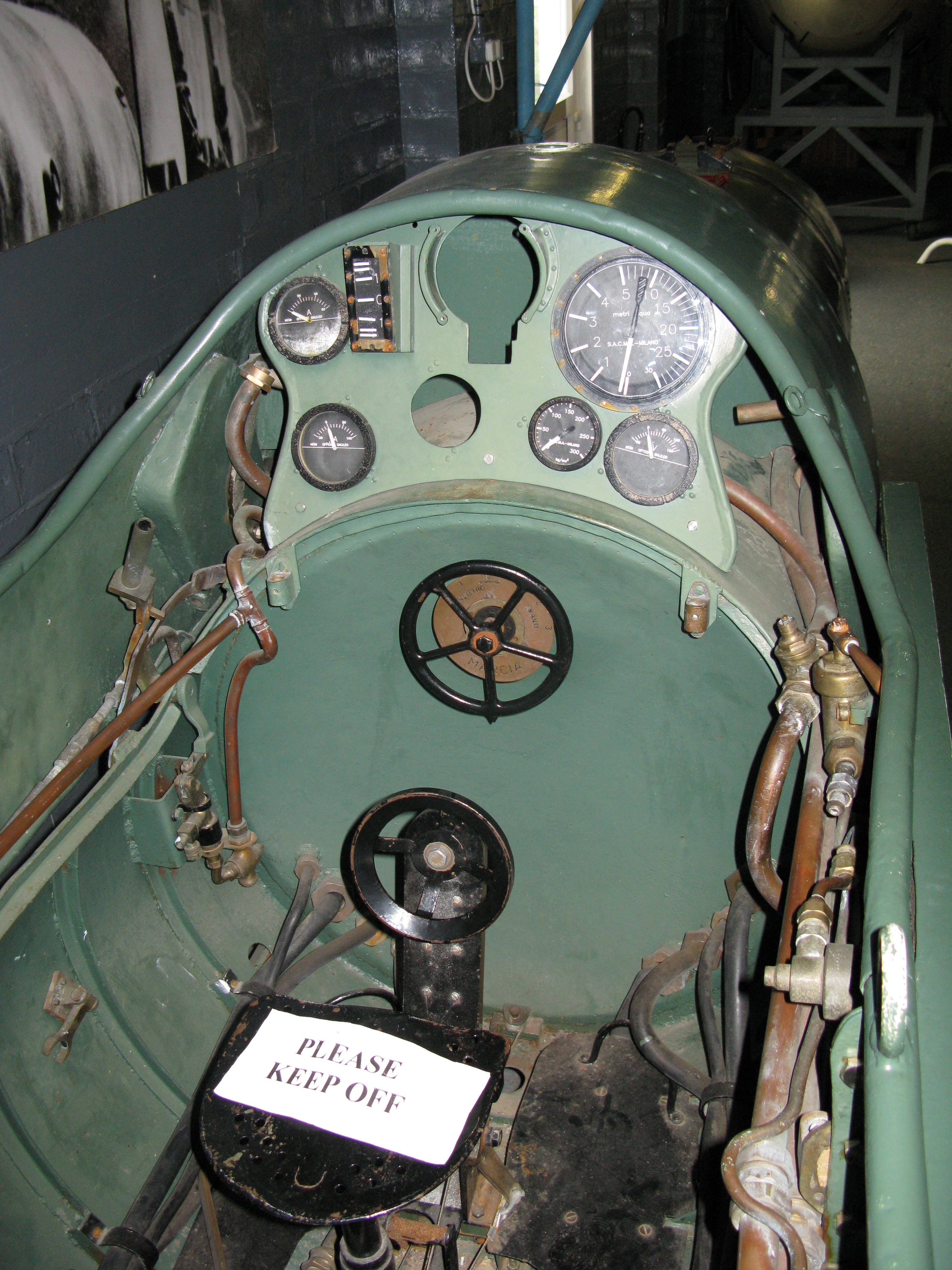|
Licio Visintini
Licio Visintini (12 February 1915 – 8 December 1942) was an Italian naval officer during World War II. Visintini was decorated for his operations against Allied shipping in Gibraltar during the Battle of the Mediterranean. His brother Mario Visintini was a famous flying ace; both were killed during the war. Biography Visintini joined the Italian Naval Academy in Livorno in 1933, and received his appointment as Ensign in 1937. Initially assigned to surface ships, he participated in missions during the Spanish Civil War; he then served on the submarines ''Narvalo'' and then on ''Atropo''. While on the latter, in April 1939, he participated in the operations for the Italian invasion of Albania. On 10 June 1940, when Italy entered World War II, Visintini was serving on the submarine ''Torelli'', and participated in its first mission in the Atlantic Ocean. On his return, he asked to be assigned to the Tenth MAS Flotilla in La Spezia, where he became an assault craft operator. ... [...More Info...] [...Related Items...] OR: [Wikipedia] [Google] [Baidu] |
Decima Flottiglia MAS
The ''Decima Flottiglia MAS'' (''Decima Flottiglia Motoscafi Armati Siluranti'', also known as ''La Decima'' or Xª MAS) (Italian for "10th Torpedo-Armed Motorboat Flotilla") was an Italian flotilla, with marines and commando frogman unit, of the ''Regia Marina'' (Royal Italian Navy). The acronym '' MAS'' also refers to various light torpedo boats used by the Regia Marina during World War I and World War II. ''Decima MAS'' was active during the Battle of the Mediterranean and took part in a number of daring raids on Allied shipping. These operations involved surface speedboats (such as the raid on Souda Bay), human torpedoes (the raid on Alexandria) and ''Gamma'' frogmen (against Gibraltar). During the campaign, ''Decima MAS'' took part in more than a dozen operations which sank or damaged five warships (totalling 78,000 tons) and 20 merchant ships (totalling 130,000 GRT). In 1943, after the Italian dictator Benito Mussolini was ousted, Italy left the Tripartite Pact. So ... [...More Info...] [...Related Items...] OR: [Wikipedia] [Google] [Baidu] |
Depth Charge
A depth charge is an anti-submarine warfare (ASW) weapon designed to destroy submarine A submarine (often shortened to sub) is a watercraft capable of independent operation underwater. (It differs from a submersible, which has more limited underwater capability.) The term "submarine" is also sometimes used historically or infor ...s by detonating in the water near the target and subjecting it to a destructive shock factor, hydraulic shock. Most depth charges use high explosives with a fuze set to detonate the charge, typically at a specific depth from the surface. Depth charges can be dropped by ships (typically fast, agile surface combatants such as destroyers or frigates), patrol aircraft and helicopters. Depth charges were developed during World War I, and were one of the first viable methods of attacking a submarine underwater. They were widely used in World War I and World War II, and remained part of the anti-submarine arsenals of many navies during the Cold War, duri ... [...More Info...] [...Related Items...] OR: [Wikipedia] [Google] [Baidu] |
HMS Nelson (28)
HMS ''Nelson'' (pennant number: 28) was the name ship of her class of two battleships built for the Royal Navy in the 1920s. They were the first battleships built to meet the limitations of the Washington Naval Treaty of 1922. Entering service in 1927, the ship spent her peacetime career with the Atlantic and Home Fleets, usually as the fleet flagship. During the early stages of World War II, she searched for German commerce raiders, missed participating in the Norwegian Campaign after she was badly damaged by a mine in late 1939, and escorted convoys in the Atlantic Ocean. In mid-1941 ''Nelson'' escorted several convoys to Malta before being torpedoed in September. After repairs she resumed doing so before supporting the British invasion of French Algeria during Operation Torch in late 1942. The ship covered the invasions of Sicily (Operation Husky) and Italy (Operation Avalanche) in mid-1943 while bombarding coastal defences during Operation Baytown. During the Normandy ... [...More Info...] [...Related Items...] OR: [Wikipedia] [Google] [Baidu] |
Battleship
A battleship is a large, heavily naval armour, armored warship with a main battery consisting of large naval gun, guns, designed to serve as a capital ship. From their advent in the late 1880s, battleships were among the largest and most formidable weapon systems ever built, until they were surpassed by aircraft carriers beginning in the 1940s. The modern battleship traces its origin to the sailing ship of the line, which was developed into the steam ship of the line and soon thereafter the ironclad warship. After a period of extensive experimentation in the 1870s and 1880s, ironclad design was largely standardized by the British , which are usually referred to as the first "pre-dreadnought battleships". These ships carried an armament that usually included four large guns and several medium-caliber guns that were to be used against enemy battleships, and numerous small guns for self-defense. Naval powers around the world built dozens of pre-dreadnoughts in the 1890s and early ... [...More Info...] [...Related Items...] OR: [Wikipedia] [Google] [Baidu] |
Algeciras
Algeciras () is a city and a municipalities in Spain, municipality of Spain belonging to the province of Cádiz, Andalusia. Located in the southern end of the Iberian Peninsula, near the Strait of Gibraltar, it is the largest city on the Bay of Gibraltar (). The Port of Algeciras is List of busiest ports in Europe, one of the largest ports in Europe and the world in three categories: List of world's busiest container ports, container, List of world's busiest ports by cargo tonnage, cargo and transshipment. The urban area straddles the small Río de la Miel, which is the southernmost river of continental Europe. As of 1 January 2020, the municipality had a registered population of 123,078, second in its province after Jerez de la Frontera and greater than Cádiz city population. It forms part of the Comarcas of Spain, ''comarca'' of Campo de Gibraltar. The surrounding metro area also includes the municipalities of Los Barrios, La Línea de la Concepción, Castellar de la Frontera ... [...More Info...] [...Related Items...] OR: [Wikipedia] [Google] [Baidu] |
Italian Auxiliary Ship Olterra
The auxiliary ship ''Olterra'' was a Italian tanker scuttled by her crew at Algeciras in the Bay of Gibraltar on 10 June 1940, after the entry of Italy into the Second World War. She was recovered in 1942 by a special unit of the Decima Flottiglia MAS to be used as a clandestine base for manned torpedoes to attack Allied shipping at Gibraltar. Construction and early career ''Olterra'' started life as the tanker ''Osage''. She was built in 1913 by Palmer's Ship Building and Iron Co Ltd, Tyneside in England, for a German company. ''Osage'' was sold to the Standard Oil Co in New York in 1914 and renamed ''Baton Rouge''. In 1925 she was again sold, this time to the European Shipping Co. Ltd of London and renamed ''Olterra''. As ''Olterra'' she passed through the hands of the British Oil Shipping Co. Ltd and in 1930 was bought by Andrea Zanchi in Genoa. On 10 June 1940, when Italy entered the Second World War by declaring war on France and the United Kingdom, ''Olterra'' found ... [...More Info...] [...Related Items...] OR: [Wikipedia] [Google] [Baidu] |
Constructive Total Loss
Marine insurance covers the physical loss or damage of ships, cargo, terminals, and any transport by which the property is transferred, acquired, or held between the points of origin and the final destination. Cargo insurance a sub-branch of marine insurance, though marine insurance also includes onshore and offshore exposed property, (container terminals, ports, oil platforms, pipelines), hull, marine casualty, and marine losses. When goods are transported by mail or courier or related post, shipping insurance is used instead. History In December 1901 and January 1902, at the direction of archaeologist Jacques de Morgan, Father Jean-Vincent Scheil, OP found a tall basalt or diorite stele in three pieces inscribed with 4,130 lines of cuneiform law dictated by Hammurabi (–1750 BC) of the First Babylonian Empire in the city of Shush, Iran. Code of Hammurabi Law 100 stipulated repayment by a debtor of a loan to a creditor on a schedule with a maturity date specified in wri ... [...More Info...] [...Related Items...] OR: [Wikipedia] [Google] [Baidu] |
Displacement (ship)
The displacement or displacement tonnage of a ship is its weight. As the term indicates, it is measured indirectly, using Archimedes' principle, by first calculating the volume of water displaced by the ship, then converting that value into weight. Traditionally, various measurement rules have been in use, giving various measures in long tons. Today, tonnes are more commonly used. Ship displacement varies by a vessel's degree of load, from its empty weight as designed (known as "lightweight tonnage") to its maximum load. Numerous specific terms are used to describe varying levels of load and trim, detailed below. Ship displacement should not be confused with measurements of volume or capacity typically used for commercial vessels and measured by tonnage: net tonnage and gross tonnage. Calculation The process of determining a vessel's displacement begins with measuring its draft.George, 2005. p. 5. This is accomplished by means of its "draft marks". A merchant vessel has t ... [...More Info...] [...Related Items...] OR: [Wikipedia] [Google] [Baidu] |
Tanker (ship)
A tanker (or tank ship or tankship) is a ship designed to transport or store liquids or gases in Bulk liquids, bulk. Major types of tanker ship include the oil tanker (or petroleum tanker), the chemical tanker, Cargo ship, cargo ships, and a gas carrier. Tankers also carry commodities such as vegetable oils, molasses and wine. In the United States Navy and Military Sealift Command, a tanker used to refuel other ships is called an oiler (ship), oiler (or replenishment oiler if it can also supply dry stores) but many other navies use the terms tanker and replenishment tanker. Tankers were first developed in the late 19th century as iron and steel hulls and pumping systems were developed. As of 2005, there were just over 4,000 tankers and supertankers or greater operating worldwide. Description Tankers can range in size of capacity from several hundred tonnage, tons, which includes vessels for servicing small harbours and coastal settlements, to several hundred thousand tons, f ... [...More Info...] [...Related Items...] OR: [Wikipedia] [Google] [Baidu] |
Intelligence
Intelligence has been defined in many ways: the capacity for abstraction, logic, understanding, self-awareness, learning, emotional knowledge, reasoning, planning, creativity, critical thinking, and problem-solving. It can be described as the ability to perceive or infer information and to retain it as knowledge to be applied to adaptive behaviors within an environment or context. The term rose to prominence during the early 1900s. Most psychologists believe that intelligence can be divided into various domains or competencies. Intelligence has been long-studied in humans, and across numerous disciplines. It has also been observed in the cognition of non-human animals. Some researchers have suggested that plants exhibit forms of intelligence, though this remains controversial. Etymology The word '' intelligence'' derives from the Latin nouns '' intelligentia'' or '' intellēctus'', which in turn stem from the verb '' intelligere'', to comprehend or perceive. In the M ... [...More Info...] [...Related Items...] OR: [Wikipedia] [Google] [Baidu] |
Force H
Force H was a British naval formation during the Second World War. It was formed in late-June 1940, to replace French naval power in the western Mediterranean removed by the French armistice with Nazi Germany. The force occupied an odd place within the naval chain of command. Normal British practice was to have naval stations and fleets around the world, whose commanders reported to the First Sea Lord via a flag officer. Force H was based at Gibraltar but there was already a flag officer at the base, Flag Officer Commanding, North Atlantic. The commanding officer of Force H did not report to this Flag Officer but directly to the First Sea Lord, Admiral of the Fleet Sir Dudley Pound. Hunt for the ''Admiral Graf Spee'' In anticipation of the outbreak of World War 2 on 3 September 1939 the German Kriegsmarine had already deployed the two heavy cruisers and as commerce raiders in the North and South Atlantic. When these ships started operating against British and French sh ... [...More Info...] [...Related Items...] OR: [Wikipedia] [Google] [Baidu] |









